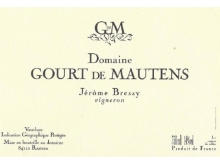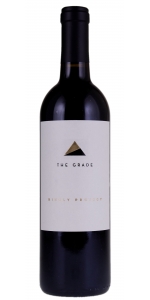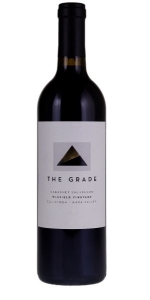Bressy Gourt de Mautens IGP 2011
All older vintage wines have been purchased from a single collectors cellar. Pictures can be requested before shipment.
After working with the fruit for over a decade, Turkey is proud to present the first single-vineyard bottling for Turley from the Del Barba Vineyard. Contra Costa is a delta where the San Joaquin and Sacramento rivers meet, and these head-trained vines are planted in deep dehli blow sand, made up of decomposed granite coming down from the Sierra Mountains. The resulting wine embodies the best the delta has to offer: silken textures, ultra fine tannin, and dark saline fruits.
Review:
"The 2023 Zinfandel del Barba is ripe, boisterous and super-expressive. Floral overtones and bright acids run through a core of red/purplish fruit. Sandy soils confer lovely aromatic presence to this pure Zinfandel. This is an especially accessible offering from Turley."
-Vinous 91-93 Points
The Grade Cellar Kingly Project Cabernet Sauvignon is made from Napa Valley Cabernet Sauvignon.
"This is a noble expression of Cabernet Sauvignon" in full regalia, with decadent aromas and a mouthfeel viscous and sleek. "This vintage of the Kingly Project Cabernet Sauvignon enters the scene" -- Thomas Rivers Brown
Review:
The 2018 Cabernet Sauvignon Kingly Vineyard is endowed with tremendous richness and concentration. It emerges from the best spots within Block 5, which is a bit more protected from the elements. The 2018 is a bit closed today, but it has a lot of promise. Time in the glass brings out layers of inky dark fruit and the savory, minerally notes that are such signatures. This potent Calistoga Cabernet needs time to shine, but it is impressive today just the same.
-Vinous 96 Points
The Grade Napa Cabernet Sauvignon Winfield Vineyard is made from Napa Valley Cabernet Sauvignon.
“This wine expresses a focused balancing act of dark, rich black fruit, and a fine tannin structure, illuminated through the core with a laser-like acidity. The wine displays a deep purple-red hue with a cranberry halo. Aromas of cassis, cinnamon, citrus oil, roasted meat, and lilac swell from the glass.
“The palate is marked by a wave of jet-black brambly fruit up front, followed by an exotic spice mid-palate and a long, complex finish that lasts and lasts expressing notes of flowering jasmine, and oolong tea. The silky tannins hold everything together and will certainly allow this wine to evolve in the cellar for at least 7-10 years.” - Thomas River Brown
Review:
The 2018 Cabernet Sauvignon Winfield Vineyard is an absolutely gorgeous wine that conveys a striking interplay of richness, power and nuance. Silky and restrained for this site, the Winfield offers up a compelling melange of red fruit, iron, cedar, tobacco, rose petal and dried herbs, all in a mid-weight style that is incredibly appealing. The Winfield is a selection taken from Blocks 1, 4 and 5.
-Vinous 94 Points
All older vintage wines have been purchased from a single collectors cellar. Pictures can be requested before shipment.
All older vintage wines have been purchased from a single collectors cellar. Pictures can be requested before shipment.
Bressy Gourt de Mautens IGP 2011 is made from 70% Grenache Noir and 30% various: Carignan, Mourvèdre, Syrah, Counoise, Cinsault, Vaccarèse and Terret Noir
It is loaded with chocolate, black raspberries, and kirsch, intermixed with dusty, loamy soil notes, pepper, and the telltale chocolate that comes from the old vine Grenache that bakes in the sun in this high elevation appellation. This is a beauty, slightly rustic but enormously endowed.
Review:
A rock star 2011, Bressy’s 2011 IGP Vaucluse is made from 70% Grenache and the balance Carignan, Mourvedre, Syrah, Counoise, Cinsault, Vaccarese and Terret Noir, all from Rasteau. Aged 12 months in demi-muid and foudre, then put into concrete vats for another 18 months, it offers a classic 2011 perfume of sweet black raspberry, new leather, crushed rock and liquid flowers. Medium to full-bodied, rich, layered and thrillingly textured, this pure, elegant and perfectly proportioned Southern Rhone will have another decade of sexy drinking.-Wine Advocate 93 Points
The Gourt de Mautens Jerome Bressy Estate
Gourt de Mautens is a family owned winery located in Rasteau that started in 1996. In 1998, Jerome Bressy took over the 13 hectares of vineyard and for him it was a dream come true. Next the winery and the ageing cellar were built.
This is the insider’s wine of the Southern Rhone. Many winemakers in the Rhone Valley, Christophe Delorme (Domaine de la Mordoree) included, feel that Jerome Bressy will be making the best wines in the entire Southern Rhone Valley in the future.
Jerome chose the options of small yields (8-15 hectoliters/hectare) and organic farming (now controlled by Ecocert) along with the use of homeopathy, which he considers essential conditions for making a great wine. Since 1989 they have not used any chemical fertilizers or pesticides on the vines, so the soil can give what it has to give in the most natural way. The yields have always been lower than average because of his father’s concern about grape quality. The estate took another step forward in the organic farming by becoming biodynamic in 2007.
The Domaine produces an average of 2,000 cases each year, red and white wine, both of equal quality (not quantity), from small different plots in Rasteau. These are homogeneous wines as each plot is farmed with the same concern for perfection, regardless of any difference in quality among them. The goal being to be at nature’s service, stepping in the process only when necessary.
The name of the Estate, "Gourt de Mautens", is the name of the area where part of the vineyard and the family farm are located. This name dates back to 1635. In provencal dialect "Gourt" means a place where the water flows from and "mautens" means bad weather. Thus, it is an area where water flows from chalky clay marly soil when it rains.
"This is one of the sensational estates in Rasteau, with proprietor Jerome Bressy farming just over 20 acres of vines. Organic farming and the naturally low yields of his old vines (8-15 hectoliters per hectare) result in wines of extraordinary concentration and intensity."
- Wine Advocate (Issue 175, Feb. 08),
The Gourt de Mautens Jerome Bressy Vineyard
The vineyard measures 13 hectares (32 acres) and is made of several parcels planted on terraces, hillsides, banks and plateaux with a northwestern and southwestern sun exposure. The soils are made of clay and limestone marls.
Most of the vines are 45-90 years old, only 1/3rd of them is 5-30 years old. On some parcels different varieties can be found on the same row, just like it used to be in the ancient times.
Red : 70% Grenache ; 30% Carignan, Mourvèdre, Syrah, Counoise, Muscardin and Vaccarèse.
White : 45% Grenache blanc, 45% Bourboulenc, 10% various
Fortified wine (Vin doux naturel): 90% Grenache and 10% Carignan
Green harvest of the younger vines. A first selection is done in the parcels during the harvest (the grapes that are not selected are left on the ground).
- back
Exceptionally aromatic with aromas of violets, hints of blackberry, blackcurrant and black plum on the nose. There is some spice that is balanced with fresh acidity and minerality. A long finish with ripe but firm tannins.
Dow's Senhora da Ribeira can be enjoyed anytime and pairs wonderfully with chocolate desserts and soft cheeses like creamy Stilton or Roquefort.
Review:
Rich and fruity, this wine is packed with intense black-currant flavors. It is perfumed, ripe with a good tannic background. The density of the wine and the firm structure point to a long aging process. Drink this beautifully structured wine from 2026.
-Wine Enthusiast 93 Points
Winemaking:
Senhora da Ribeira has one of the most advanced specialist wineries in the Douro, combining the best of traditional winemaking practice, evolved over centuries, and the latest state-of-the-art automated systems. Three granite ‘lagares’ for foot treading are complemented by three ‘robotic’ lagares, designed by the Symington family and installed in the quinta’s winery in 2001.
It has long been recognised that traditional treading produced some of the finest Ports, but there are some drawbacks involved in traditional treading; temperature control is difficult, there is a limit to how long people are willing to tread and they need to sleep. The winemaker’s options are therefore limited, he or she cannot order treading at different times through the night, or pull people off the picking team at will. Furthermore, emptying the traditional lagar takes a long time; in the meantime the fermentation process is accelerating away. A further handicap arose over recent years, when an increasing scarcity of labour obliged producers to look for less labour-intensive vinification solutions. The Symingtons opted to devise a mechanical means of replicating the proven method of foot treading. The result was the Symington ‘robotic lagar’, an automated treading machine which exactly replicates the gentle action of the human foot and which has revolutionised winemaking in the Douro Valley. This equipment is very expensive but the results have been so good that an increasing proportion of Dow’s finest wines are now made in these automated lagares. Approximately half of the wines for Dow’s much praised 2003 Vintage were vinified in them.
The Senhora da Ribeira’s Quinta Vintage Ports have amassed a highly impressive number of awards: three Gold Medals at the International Wine Challenge, (2008, 2006 and 2001, for the 2005, 2002 and 1999 Vintages, respectively) as well as seven Silver Medals and two Gold Medals at the International Wine & Spirit Competition (London, 2008 for the 2005 Vintage and 2002 for the 1998 Vintage). In September 2006, Jancis Robinson MW wrote, “One very exciting new bottling is Dow’s Quinta da Senhora da Ribeira 2004...this single quinta bottling demonstrates superb quality with wonderful vibrancy. Great wine in any context - not that unlike some California reds! This is definitely a wine to look out for when it is released.”
Wine Profile
The very hot climate through the summer at this vineyard results in highly complex and concentrated wines but very low yields. Colours of the musts in the fermentation tanks are always purple-black due to the very high skin to juice ratio. The old vines add further to the intensity of the wine as they make up a very large percentage of the vineyard. The resulting wine can be described as being the essence of Vintage Port, with powerful wild red-fruit flavours, leading into rich black chocolate notes, the whole balanced by complex, attractive and peppery tannins.
One of the Douro’s most beautiful vineyards, Senhora da Ribeira is located 24km (15 miles) upriver from Quinta do Bomfim in the remote Douro Superior. The vineyard commands a magnificent north bank position, overlooking a broad sweep of the Douro, directly opposite another famous Symington owned vineyard: Quinta do Vesuvio. Senhora de Ribeira was built close to an ancient river crossing, guarded by two 12th century castles on either side of the river built by the Moors during their centuries long occupation of Iberia. A small chapel dedicated to the ‘Lady of the River’ (literally: Senhora da Ribeira) has stood here for centuries and gave the quinta its name. Travellers would pause here to ask for a safe river passage and onward journey.
Senhora da Ribeira’s wines are some of the finest in the Douro and they complement those from Bomfim in the composition of Dow’s classic Vintage Ports. The quinta’s high proportion of old vines (45% are over 25 years old) is of critical importance. The old vines are very low-yielding, producing on average less than 1Kg of grapes each, giving intense and concentrated musts which are ideal for classic Vintage Port. The remainder of the vineyard was replanted as follows: 21% in 2001 and 34% from 2004, the latter involving mainly Touriga Nacional vines. This grape variety - very important for Vintage Port - now represents almost exactly a third of the total planted at the quinta. The entire vineyard has the maximum ‘A’ rating.
As with Bomfim, the consistency of the climate plays a key role, although the rainfall is only half of that experienced at Bomfim: 448mm is the 10 year average. This more extreme climate, hot dry summers and cold, equally dry winters results in wines with unique depth of colour and complexity.
As with Quinta do Bomfim, the best Ports from Senhora de Ribeira are used to make Dow’s Vintage Ports in the great and rare ‘Declared’ years. In the good year’s when Dow’s does not ‘declare’ a Vintage, the best wines of ‘The Lady of the River’ are bottled as Dow’s Quinta de Senhora da Ribeira Vintage Port. They will tend to mature a little earlier than the very rare ‘Declared’ years, but can be every bit as good as some other Vintage Ports.
Ferren Chardonnay Sonoma Coast is made from 100 percent Chardonnay.
The Sonoma Coast bottling is a blend of barrels from Ferren's single vineyard offerings; Lancel Creek, Silver Eagle, Volpert, and Frei Road Vineyards. The wine is always somewhat more approachable early in its life as less new oak is used in the blend. Pure and translucent fruit is the hallmark of this cuvée. Citrus, quince, sea spray, and minerals are buoyed by refreshing acidity and a seamless finish.
Review:
A nuanced, tangy, mouthwatering and approachable wine that is both complex and very drinkable. The aromas are delicate, lifted and fresh, with oyster shells, lime zest, white flowers and chamomile. The palate is super fresh, layering salinity, richness and a long finish. Medium- to full-bodied. Drink or hold
-James Suckling 98 Points









